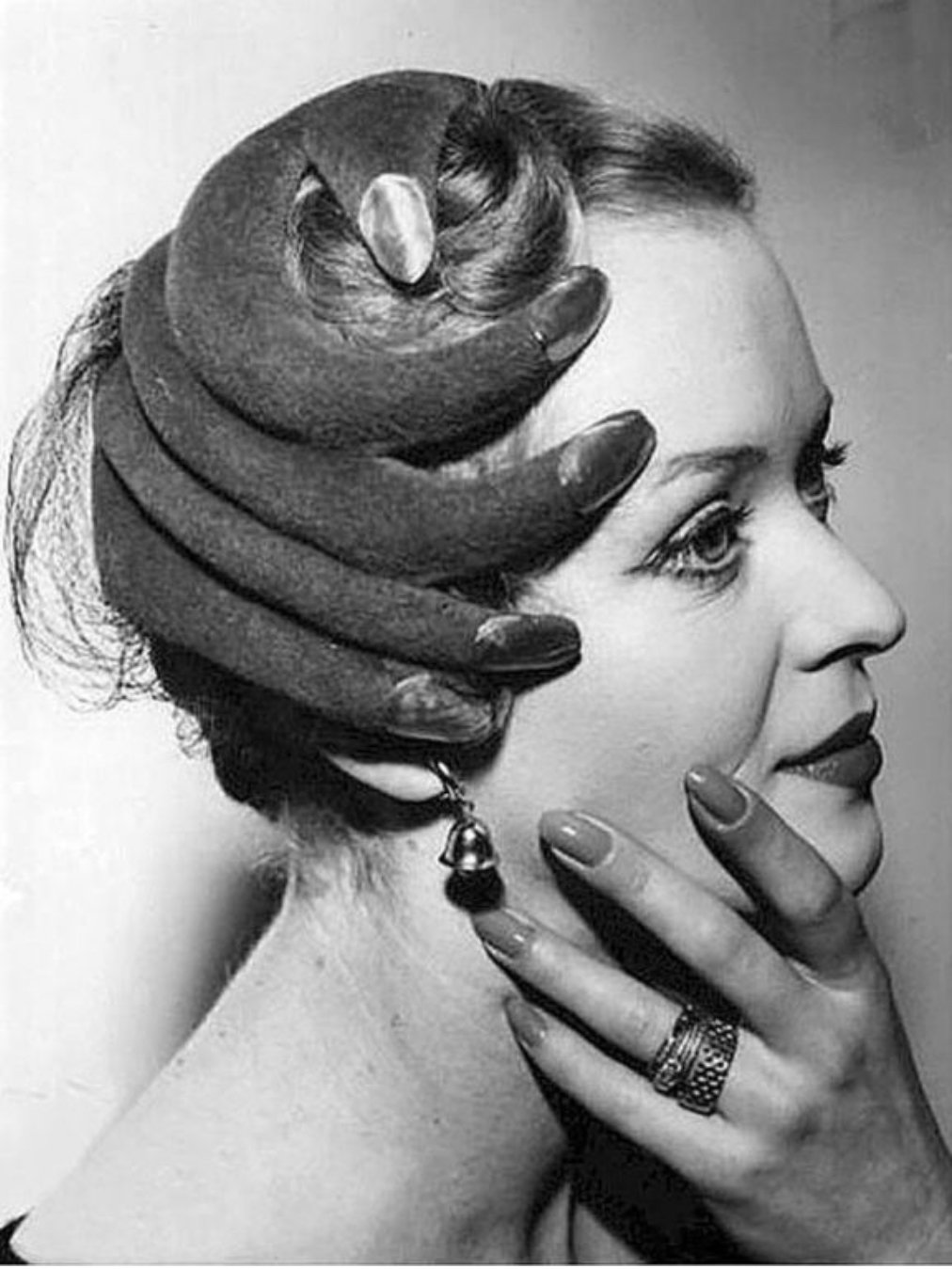Elsa Schiaparelli
In my mind there is no greater designer than Elsa Schiaparelli. A fellow virgo, a trail blazer of surrealist fashion, entirely glamorous and remarkably resilient.
Elsa was born on the 10th September 1890 in Rome, Italy into an aristocratic and academic Italian family. As a girl Elsa was considered rather ‘plain’ to her mother. Elsa planted flower seeds in her eyes, ears, mouth and nose in hope that she would be able to grow into a flower garden and become beautiful.
In 1911, Elsa published a collection of overtly sensual poems, Arethusa. Elsa’s whimsical ways concerned her parents conservative sensibilities. So much so that Elsa was sent to a convent in Switzerland, where she went on a hunger strike and her parents had no choice but to bring Elsa home.
As a young adult Elsa set off for London to escape a marriage planned by her parents. The city proved to be the beginning of freedom. When she was attending a conference on theology by Count Wilhelm Wendt de Kerlor, she fell under the charm of the young theosophist. They married in 1914 and left London for New York in 1916, after spending several seasons in Nice.
The young couple lived on Elsa’s dowry, which was disappearing at the speed of light. Their daughter Yvonne, nicknamed Gogo, was born in 1920 and very soon contracted polio. Juggling her Bohemian lifestyle, part-time jobs, her husband’s repeated absences and taking care of her daughter, Elsa asked for a divorce.
In 1922, she moved to Paris with her daughter. During the day, Elsa worked at an antique dealer. In the evenings Elsa made the most of Paris’s vibrant artists social scene.
Elsa’s life in Paris marked the true beginning of her career.
Elsa was as much an artist as a fashion designer, she developed her revolutionary and striking style by designing clothing built on the inspiration of Futurism, Surrealism, mysticism, erotic fantasy, traditional and avant-garde art, and her own psyché. Her vision of fashion as a visual art influenced all of her work, from the creation of her signature colour Shocking Pink, to her gowns featuring pictorial artworks of Surrealists painters like Salvador Dalì. Schiaparelli took Dali’s dream-based imaginary and provocative concepts and replicated them into her own creative process.
Elsa Schiaparelli’s revolutionary ideas and designs (albeit very controversial at the time) alongside her collaborations put art and fashion on the same level. Schiaparelli’s haute couture became synonymous with art masterpieces, and as art represents a symbolic language as do her fashion designs. Schiaparelli’s designs transcend the value of a specific use or trend, in my opinion Elsa Schiaparelli, herself, is the original icon.
Dressing icons
Wallis Simpson was undoubtably the most talked about woman of the late 1930’s and an absolute style icon to say the least. Fittingly Wallis selected eighteen outfits from the Schiaparelli summer 1937 collection to mark her transition from a twice-divorced American socialite to the Duchess of Windsor. As a cheeky wink to her critics, the bride of the year chose to be photographed by Cecil Beaton before her wedding on the grounds of Château de Candé wearing Schiaparelli’s iconically absurd (for the time) lobster print dress. Designed in collaboration with Salvador Dalí. Many young women of the time and still now, viewed Wallis Simpson as the epitome of chic and they eagerly followed the latest news reports on the wedding preparations and her choices in fashion.
Joining the millinery world
There os no greater accessory in this world than a hat, if I had my way, a hat would be worn by absolutely everyone all the time regardless of weather, climate or fashion. They are the final word in a look, the full stop of an outfit, the piece de resistance of any trend, any season.
In 1934 our reigning Queen Schiaparelli decided to add a millinery department to her business and, rightly so I say. One of her iconic hat designs at that time was the so-called ‘mad cap’ worn by celebrities like Katharine Hepburn. Since the hat design had been copied by many contemporary fashion designers, Schiaparelli ordered every single mad cap to be destroyed, talk about a renegade.
1937 saw the famous Shoe hat, which was worn by Dali’s wife, Gala. The inspiration for the shoe hat came from a photograph of Dalì with his wife’s slipper on his head.
Schiaparelli went on to design a great many hats all of which contained two vital ingredients: chic and shock.
(scroll to the very bottom of this article to view my favourite of Elsa Schiaparelli’s millinery)
The beginning of the end
In 1939 when France declared war on Germany as an Italian in France, Schiaparelli was forced to leave Paris. From 1941 on she spent the war years in New York. After the war, she returned to France and restarted her activity but her business started to wind-down, not only because of her rivalry with Coco Chanel but above all because of the emergence of Christian Dior’s New Look.
The house of Schiaparelli ended its activities in December 1954, the same year that her great rival Coco Chanel returned to the business. Schiaparelli spent a comfortable retirement living in Paris and wrote her own autobiography entitled Shocking Life. After her death in 1973, her shop in Paris reopened only in 2012 in the same address, in Place Vendôme, and is now a leading brand in haute couture.









